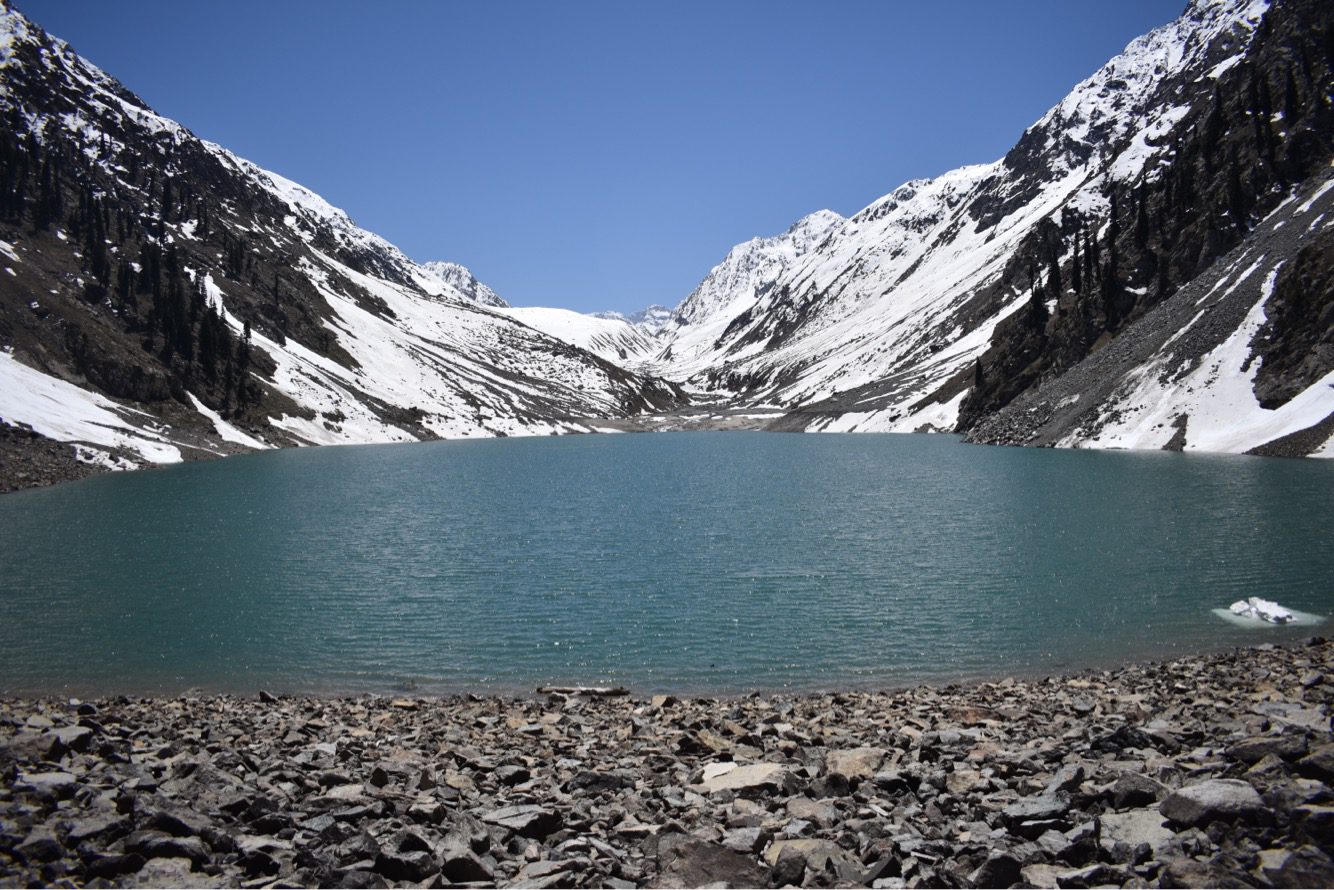- Attabat Lake
Attabat Lake, located in the Gojal region of the Hunza Valley in Gilgit-Baltistan, has become one of the biggest tourist attractions. It offers activities such as boating, water skiing, fishing and other recreational activities. Lake Attabad is one of the most beautiful lakes in the world because of the dramatic mountain landscape surrounding it.

ATTABAD LAKE
2. Beaches of Balochistan
Balochistan is usually perceived as mountainous terrain without scenic landscape. But this myth is quickly dispelled when you step into this territory of Pakistan. The geographical characteristics of the province have phenomenal beaches that any visitor should definitely see. With golden sand and clear blue water, these beaches are a sight to behold. Darsan Beach is located along the Gulf of Oman in the Gwadar area and is a famous holiday destination. Gwadar Beach is home to amazing wind-carved mountain formations on one side and clear blue beaches on the other side. Hammerhead Beach is a fascinating confluence of desert land with the seashore. Likewise, Kund Malir is a desert beach in Balochistan. Recently named one of the most popular destinations. Kund Malir attracts locals with its clean water and magical charm. Lasbela is a coastal district of Balochistan, boosting a mesmerizing beach with shallow sand and crystal clear waters. Ormara Beach is a breathtaking view of the water and mountains from the highway. Pasni, is a medium-sized town and a fishing port in Gwadar District, Balochistan. The Pasni beach is a destined Fish harbor. Sonmiani Beach is located in the Las Bela area and is considered a popular tourist destination.

BEACHES OF BALOCHISTAN
3. Cholistan desert
The Cholistan Desert, also locally known as Rohi, is a large desert in the southern part of Punjab that forms part of the Greater Thar Desert. Once a fertile region, it later became a center of caravan trade, which led to the construction of numerous forts in the medieval period to protect trade routes, an example of which is the Deravar Fort. Derawar Fort is a large square Fortress, first built in the 14th century AD. The nearest major city is Bahawalpur, 30 km from the desert. The desert stretches about 480 kilometres in length. These are wonderful sights to see.

CHOLISTAN DESERT, DERAWAR FORT
4. Deosai Plains
Also known as the Land of the Giants, the Deosai Plain is accessible from Skardu District in the north and the Astore District in the west. The plateau is located at the boundary of the Karakorum and the western Himalayas. Deosai Plateau is the second-highest plateau in the world. The best time to visit Deosai is from March to September.

DEOSAI PLAINS
5. Fairy Meadows
Fairy Meadows was named by German climbers and is locally known as Joot. It is famous for its beautiful green plateaus and the ninth largest mountain in the world, Nanga Parbat. It is present in the Diamer District of Gilgit-Baltistan, at about 3,300 meters above sea level. Railkot Glacier flows down from the Nanga Parbat massif, giving clear water and a beautiful view. This place is often called “Heaven on Earth” because of its incomparable beauty.

FAIRY MEADOWS
6. Glaciers of Pakistan
Pakistan is home to many glaciers, which are a stunning sight. The Baltoro Glacier, located in Baltistan is 62 km long, is one of the longest glaciers outside the polar region. The glacier leads to the Shigar River, which is a tributary of the Indus River. Several large tributaries of glaciers feed the main glacier of Baltoro, including the Godwin Austin Glacier, flowing south from K2. The Siachen Glacier is in the eastern Karakoram Range in the Himalayas Mountains. It is the longest glacier in the Karakoram, the second-longest in the world’s non-polar areas. The Biafo Glacier is a 63 km long glacier in the Karakoram Mountains of the northern areas, which meets the 49 km long Hispar Glacier at Hispar La to create the world’s longest glacial system outside of the polar regions. The Godwin-Austen Glacier is near K2 in the Northern Areas of Pakistan. Its confluence with the Baltoro Glacier is called Concordia and is one of the favorite hiking spots in Pakistan, as it provides beautiful views of four of the five eight-thousand-meter peaks in Pakistan.

BALTORO GLACIER, PAKISTAN
7. Hingol National Park
Hingol National Park is the largest national park in Pakistan, located in the Makran coastal region. It covers an area of about 6,100 square kilometres and is located 190 km from Karachi in the three districts of Gwadar, Lasbela and Awaran in Balochistan. The park is bordered by dense forest in the north, a barren mountain range in the south and a tributary of the Hangul River. This largest national park in Pakistan is home to 35 species of mammals, 65 species of reptiles and amphibians and almost 185 species of birds. This park forms a good habitat for the wild Sindh ibex, Balochistan Urial, and Chinkara. Hingol National Park is famous for its mud volcanoes, the statue of Princess of Hope and unique rock formations.

HINGOL NATIONAL PARK
8. Hunza
Hunza Valley is a mountain valley in the northern part of Gilgit Baltistan. Hunza is one of the most exotic places in Pakistan, several high peaks rise above 7000 m in the vicinity, including Rakaposhi, Ultar Sar, Diran Peak, Ghent and Hunza Peak. The fabulous Baltit Castle above Karimabad is a monument to Hunza, built about 800 years ago. Its wooden bay windows overlook the valley. It was originally used as the residence of the Hunza World. Eco-hikes are usually welcomed by tourists here. The valley is considered a source of inspiration for the mythical Shangri-la Valley.
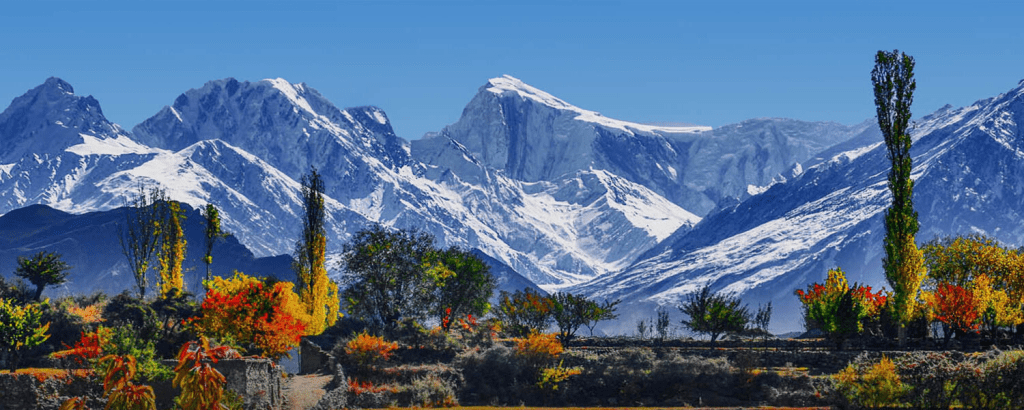
HUNZA VALLEY
9 Karakorum Range
Karakoram is a large mountain range in Pakistan, China and India. It is part of the giant Himalayan Mountains, which are the largest mountains in the world. The highest peak of the Karakoram – K2. K2 is the second-highest mountain in the world and is located in the second-highest mountain range in the world. The Karakoram mountain ranges cover everything from remarkable mountains to short hiking trails. It is a beautiful place characterized by deep narrow valleys, sharp peaks, glaciers and rivers. The Karakoram Mountain range is one of the world’s tallest at approximately 6,000 m above sea level. It’s home to four of the fourteen peaks in the world that exceed 8,000 m above sea level. The most overshadowed part of the world is the Karakoram mountain range in Pakistan. It covers 28-50% of the territory with many glaciers, which makes it exceptional.

KARAKORAM RANGE
10. Kot Dijji Fort
The Kot Dijji Fort formally known as Fort Ahmadabad, is an 18th-century Talpur-era Fort located in the town of Kot Dijji in Dhairpur District, about 25 miles east of the Indus River at the edge of the Thar Desert. The Fort sits above a pre-Harappan Civilization archaeological site dating to 2500 to 2800 BCE. The fort consists of three strategically placed towers, each 50 feet high. The fort contains several places for replacement cannons and numerous internal passages for protection. The fort also contains a water tank, an ammunition depot, a prison, a courtroom, numerous security cells and a small royal residence.

KOT DIJJI FORT
11. Mohenjodaro
Showing the glory of the past, the ancient city of Mohenjo-Daro is located on a hill in the modern Larkana district of Sindh province. During its heyday from about 2500 to 1900 B.C., the city was among the most important to the Indus civilization. It occupies over 250 acres on a number of mounds, and the Great Bath and associated large building occupy the highest mound. This spectacle attracts a huge number of visitors to witness how ancient civilizations flourished in the region now known as Pakistan.
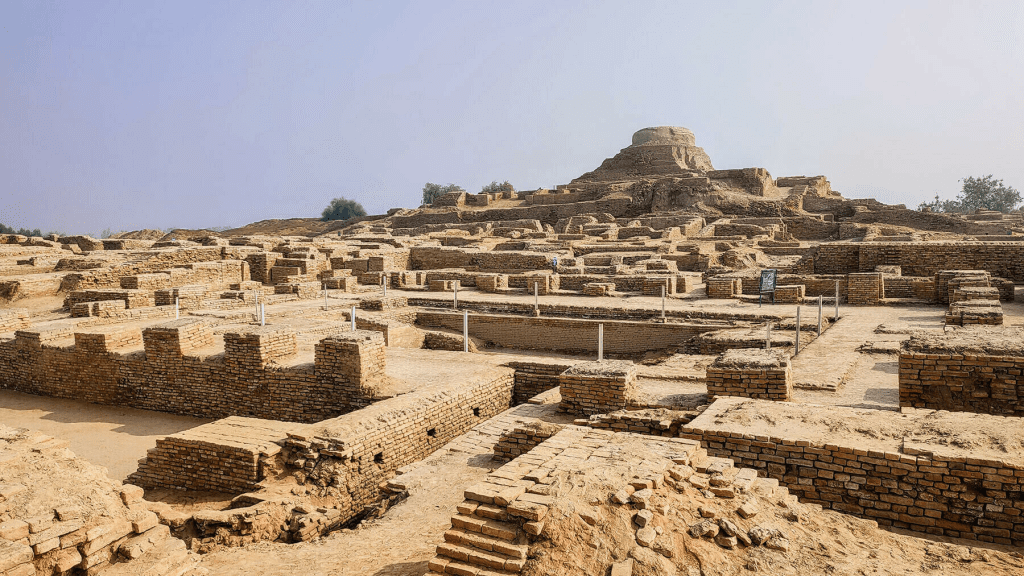
MOHENJODARO
12 Noor Mahal
Also known as the Palace of Lights, the grandeur of Nur Mahal is a sight to see. Located in the city of Bahawalpur in Punjab, Noor Mahal Palace is a hidden gem. Its museum sheds light on a rich culture and history that dates back centuries. The two-storey palace has exquisite furniture and fixtures like chandeliers and cupboards that can be seen in its 32 rooms. There is a rich collection of arms in its armory including swords and muskets that are displayed on the palace walls. The building also has five domes representing the traditional Islamic architecture in the sub-continent along with wide Corinthian-style columns and pediments. Its location in the middle of a lush green garden with water tanks and fountains has also added to its beauty.

NOOR MAHAL
13. Neelum Valley
Neelum valley has beautiful and panoramic scenery. This valley is parallel to the Kaghan valley. There is a noisy and beautiful river called Neelum, which provides tourists with fresh and clean water. Surrounded by lush green trees on both sides of the river, the Neelam Valley got its name from the greenery, of which there are many.The valley has high mountains. The geographical location of the Neelum Valley is north and northeast of Muzaffarabad in Kashmir.
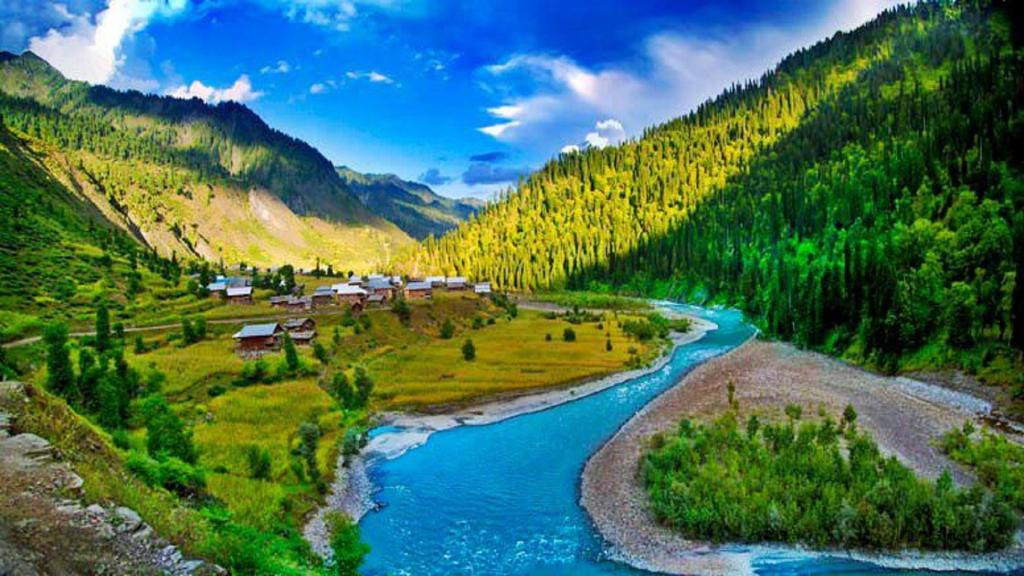
NEELUM VALLEY
14. Rohtas Fort
Rohtas Fort is a 16th-century fortress located near Jhelum city, Punjab. The Fort is one of the most enormous in the subcontinent. The fortress was built by Raja Todar Mal on the orders of Sher Shah Suri. The Fort is known for its large defensive walls and several monumental gateways. Rohtas Fort was declared a UNESCO World Heritage Site in 1997, as an exceptional example of the Muslim military architecture of Central and South Asia.

ROHTAS FORT
15. Saidpur Village
Saidpur village is a Mughal era village located near the Margalla Hills, east of Daman e Koh in Islamabad. The Village has the footprints of various civilizations, including Gandhara, Greek, Buddist, Mughal, Ashoka and the colonial periods, and now serving as a a popular holiday destination for tourists. During the Mughal Period Saidpur Village was considered a garden resort, where a water for drinking and watering plants came from the eternal spring. Today Saidpur is a quaint little village where cultural exhibitions and restaurants create a great atmosphere.

SAIDPUR VILLAGE
16. Skardu
Skardu is the largest town of Gilgit Baltistan, the land of mountains and a perfect place for trekking and hiking. Many hiking tracks start from Skardu. It has lush green meadows, snow-covered mountains, freshwater springs, and historical places. Skardu has a very rich culture as many cultural festivals are celebrated here. Satpara Lake is a famous lake here that supplies fresh water to the Skardu valley. Tourists can enjoy fishing and boating on Lake Satpara, a charming, amazing lake with magnificent beauty. Another attraction here is the Skardu Fort, also known as Kharpocho Fort. It is an ancient fort, built on top of a small hill surrounded by the Indus River. Just nearby is Katpana Desert, also known as the Cold Desert. This desert is the world’s highest desert. Katpana Desert is the gem of Skardu and an amazing place to visit. The beautiful white sand dunes and lush green trees attract tourists from all over the world. This cold desert is not barren like other deserts. Kachura Lake is the jewel of Skardu. This lake is surrounded by guest houses, snow-covered mountains, green trees, and rest houses. The water of the Kachura Lake is very clear. Tourists can enjoy fishing and hiking here.

SKARDU
17. Faisal Mosque
Faisal mosque, located in Islamabad is considered the national mosque of Pakistan. It is the sixth-largest mosque in the world and the largest within South Asia, located on the foothills of Margalla Hills. The mosque features a contemporary design consisting of eight sides of concrete shell and is inspired by the design of a typical Bedouin tent. The mosque is the main attraction of Pakistan, is a modern and influential element of Islamic architecture.

FAISAL MOSQUE
18. Badshahi Mosque
Badshahi Mosque is a Mughal-era mosque in Lahore, located west of the Lahore Fort on the outskirts of Lahore City. It is one of the largest mosques in the world and is considered one of the iconic landmarks of Lahore. The Badshahi Mosque was constructed by the sixth Mughal emperor Aurangzeb and was the largest mosque in the world from 1673 to 1986. The mosque is an important example of Mughal architecture, with an exterior that is decorated with carved red sandstone with marble inlay. It remains the largest mosque of the Mughal-era, and is the third-largest mosque in Pakistan.
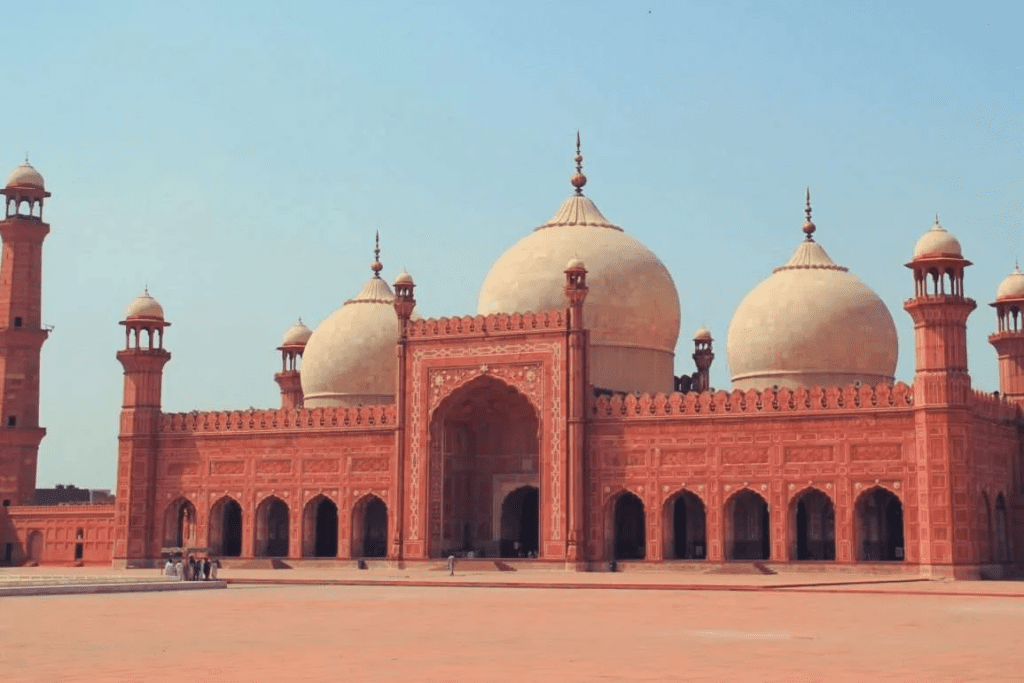
BADSHAHI MOSQUE
19. Wazir Khan Mosque
The Wazir Khan Mosque is a 17th-century mosque located in the city of Lahore. The mosque was commissioned during the reign of the Mughal Emperor Shah Jahan as a part of an ensemble of buildings. It is on the UNESCO World Heritage Tentative List and is considered to be the most ornately decorated Mughal-era mosque. The Wazir Khan Mosque is known for its elaborate faience tiles known as kashikari, as well as its interior surfaces, which are almost entirely decorated with elaborate murals from the Mughal era.
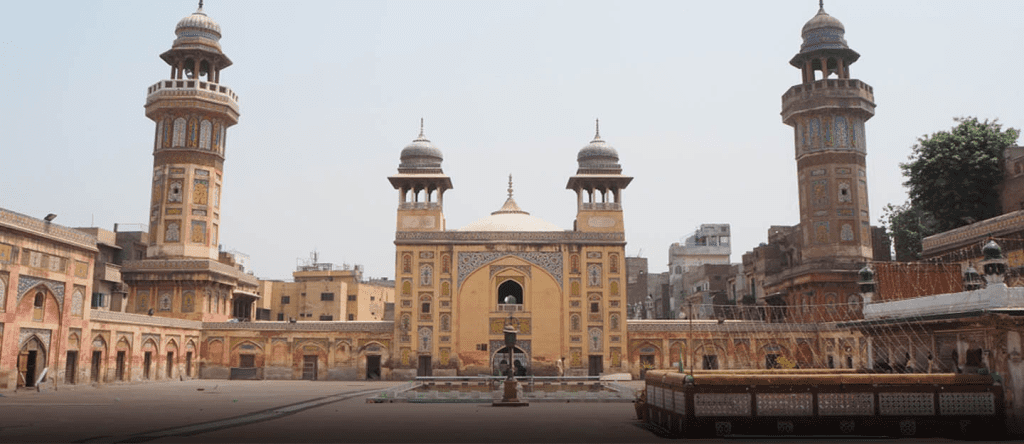
WAZIR KHAN MOSQUE
20. Mahabat Khan Mosque
The Mahabat Khan Mosque is a 17-century Mughal-era mosque in Peshawar. It was built in 1630, and named after the Mughal governor of Peshawar, Nawab Mahabat Khan bin Ali Mardan. The mosque’s white marble façade is considered to be one of Peshawar’s most iconic sights. The hall is surrounded by two high minarets, which are divided into three sections. The facade of the prayer hall is also blocked by six small decorative minarets that surround the five arched entrances of the mosque, with an additional two minarets framing a set of six. The roof is decorated with numerous merlons.

MAHABAT KHAN MOSQUE
21 Shah Jahan Mosque
Shah Jahan Mosque is located in Thatta, Sindh. The mosque built in 1647 as a gift of generous hospitality to the Sindhi’s during the reign of the Mughal King Shah Jahan. Additionally, red bricks and blue glazed tiles used in its construction, and may have been imported from Hala. The mosque has 93 domes and it is constructed with acoustic characteristics in mind. Importantly, when the voice exceeds 100 dB, the voice of the person speaking at the other end can be heard from the other end.

SHAH JAHAN MOSQUE
22 Bhong Mosque
The Bhong Mosque is located in Bang Village, Rahim Yar Khan district, Punjab. Its design and construction lasted almost 50 years (1932 – 1982). It also received the Aga Khan Award in Architecture in 1986 and the Sitara-e-Imtiaz Award in 2004. This mosque is known for its exquisite design and architectural beauty made of gold sheets. Carved in intricate decorative patterns and elegant calligraphy, this mosque is a beautiful sight.

BHONG MOSQUE
23 Broghil Festival
The two-day Broghil Festival features various activities including horse and yak polo, cricket, football, buzkashi, marathon races, tug of war, wrestling, music and other traditional games with a large number of tourists. The yak race, yak polo, fireworks, Buzkashi, traditional music and traditional food shows are usually the main features of the festival. The yak polo is played at an altitude of 13,600 feet above sea level in Broghil valley. During the horse and cattle show, the cattle of the valley, including yak, sheep, ram, goat, cows and bulls, to walk in a circle. In addition, local women exhibit and sell local cuisine, as well as sell local handicrafts of Wakhi culture. Tourists enjoy the cuisine and participate in musical concerts, dance to the rhythm of Waikhan music and ride yaks and mountain ponies.

BROGHIL FESTIVAL, YAK POLO
24 Chilam Joshi
The four-day festival is held in the middle of May each year at Kalash. This festival gives an excellent opportunity to celebrate the beginning of summer and to give a message of peace to the world. During this festival, the people of Kalash pray for the safety of their fields and animals. They sing and dance to the beat of drums. Chilam Joshi starts at Rumbur Valley and moves to the other valleys of Kalash. The women dress in vibrant colours, gold and silver jewelry and wear colorful headband. Other festival celebrated at Kalash is Uchal Festival, a nine-day celebration to enjoy the harvest in the month of August.

CHILAM JOSHI FESTIVAL

UCHAL FESTIVAL
23 Mela Chiraghan
This festival is a three-day annual festival to mark the urs (death anniversary) of the sufi saint and poet Shah Hussain who lived in Lahore in the 16th century. It takes place at the shrine of Shah Hussain in Baghbanpura on the outskirts of Lahore adjacent to the Shalimar Gardens. The festival is one of the largest festivals in Punjab. A large number of devotees gather to pay their respects. Damaal is performed among the millions of candles that are lit during the festival.

MELA CHIRAGHAN FESTIVAL
26 Shandur Polo Festival
Shandur Polo Festival is a sports festival held annually from July 7 to July 9 at the Shandor Pass in the Upper Chitral of Khyber Pakhtunkhwa. The polo tournament is held between the teams of Gilgit-Baltistan and Chitral districts according to the rules of freestyle. Organized and funded by the Khyber Pakhtunkhwa Tourism Corporation, the tournament is held in Sandor Top, the highest polo ground in the world at an altitude of 3700 meters. The festival also includes folk music, dancing and camping.

SHANDUR POLO FESTIVAL
27 Ajrak
Ajrak is a unique form of block printing found mostly in Sindh. These shawls display special design and patterns made using block printing by stamps. Over the years, Ajraks have become a symbol of the Sindhi culture and traditions. The most commonly observed pattern in Ajrak blocks and the fabric is dots between two lines. Mughal era has a deep influence on these designs. The Ajrak blocks were designed taking inspiration from the Muslim architectural elements. Sindhi Ajrak is given to the guests as an honor.

AJRAK
28 Salt Lamps
Salt lamps found in Pakistan are called Himalayan salt lamps and they originate from the Khwera salt mines. This salt is millions of years old and is used as table salt. They are decorative lights that people buy for their homes. They are taken from the Himalayan salt which is pink in color. The Himalayan salt lamps are created by pitting a light bulb in the big pieces of pink salt. When they are lit, they emit a welcoming pink glow which is appealing. This distinctive look is attractive to the eyes and it occurs due to the minerals found in the salt. Their ambient lights produce a relaxing and tranquil environment that is soothing for people.

HIMALAYAN SALT LAMPS
29 Khussay
Khussay, a traditional footwear in Pakistan symbolizes the country’s rich culture. They’re made of the highest-quality leather, hand-stitched, and available in a variety of colours, as well as with embroidery, beadwork, and other embellishments. This traditional Pakistani shoe has become an emblem of culture over the years. It can be worn with eastern and Western clothing.

Khussay, a traditional footwear in Pakistan
30 Hala Pottery
The attractive town, Hala, located near the River Indus in Sindh, is the home of ancient blue pottery artisanal artists called Kashigars. Hala is celebrated for glazed blue pottery in Pakistan, which is available in many sizes and shapes and is famous for wonderfully magnificent hand paintings and motifs.

POTTERY IN PAKISTAN
31 Hand woven carpets and rugs
Handmade rugs and carpets from Pakistan, also known as oriental rugs are famous for their durability and intricate designs. These are handwoven by skilled artisans, who have perfected their craft. Not only are the designs exquisite, but they are durable and less expensive than the Persian carpets. These rugs come in all shapes and sizes, there are runner rugs, antique rugs, and small or large rugs.

32 Biryani
Biryani is a mixed rice dish originating among the Muslims of the subcontinent. It is made with spices, rice, and usually some type of meat (chicken, beef, goat, lamb, prawn, fish). Biryani is one of the most popular dishes in Pakistan. The aroma and the flavour of biryani is unmatched. This dish may be cumbersome to prepare, however it is worth the effort. The layers of saffron colour rice with meat gravy are usually eaten with yoghurt chutney. It is readily available in almost all restaurants.

33 Haleem
Haleem is a type of stew that is widely consumed in Pakistan. Although the dish varies from region to region, it optionally includes wheat or barley, meat and lentils. It is made by blending or marshing the meat in the curry and serving hot with flat breads or on its own. Spices containing a wide variety is used to bring about that unique flavour. This dish is slow cooked for seven to eight hours and then vigorously stirred or beaten with a pestle-like stirring stick. This results in a paste-like consistency, blending the flavors of spices, meat, barley and wheat. A traditional haleem is made by firstly soaking wheat, barley and gram lentil overnight. A spicy meat gravy called Korma is prepared until the meat becomes tender. This is a must delicacy to try.

34 Nihari
Nihari is a dish created for kings, nawabs and emperors but now widely consumed by many across Pakistan. Rich in meat content, light on spices but very satisfying, this scrumptious curry is enjoyed with hot naan. It may look like a soup, but is thick that has bits of beef meat and bones. Nihari revolves around the cut of the meat, the slow cooking and the end result of whole tender pieces of meat that come off the bone at a touch. Best made with beef shank, sometimes with mutton or spring lamb and very occasionally with chicken. It is best cooked very slowly on low heat and if possible overnight. Enjoying a dish of Nihari in Pakistan is a delight indeed.

35 Chapli Kabab
Chapli Kabab is a Pushtun – style minced meat kabab, usually made from ground beef, mutton or chicken with various spices in the shape of a patty. Chapli Kabab originally comes from Peshawar. The Peshawari Chapli Kabab is made with beef, deep fried and is a popular street food throughout Pakistan. Prepared with minimum spices, the unique taste of these kababs is satisfying and popular during Eid season. Chapli Kababs can be served and eaten hot with naan or as bun kabab.
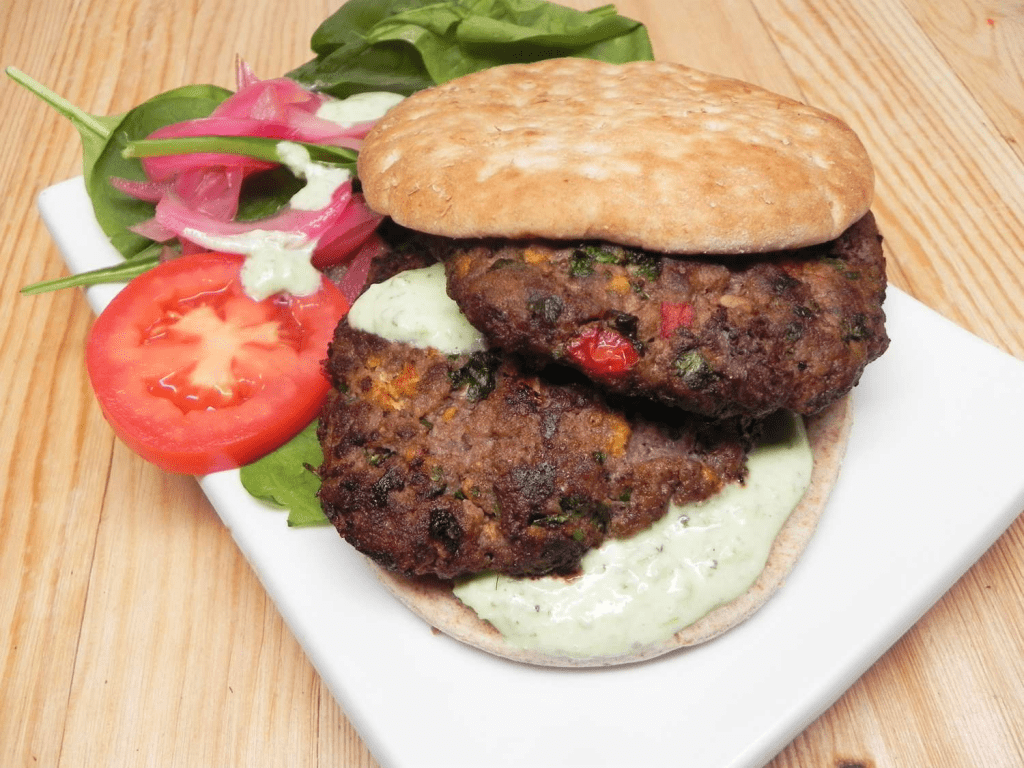
36 Sajji
Sajji is a popular Pakistani dish originating from the province of Balochistan. It consists of marinated, skewered, and roasted lamb or chicken. The meat is typically marinated in salt, although it can also be combined with green papaya paste or stuffed with potatoes and rice. Traditionally, whole goats or lambs are roasted over an open fire so that the burning wood imparts a smoky flavor to the meat. When properly prepared, the meat should be crisp on the outside, yet juicy and tender on the inside, and consumers often squeeze lemon juice over the meat before eating. It is recommended to serve Sajji with rice, naan bread, and raita dip.

37 Dumpukht
Dumpukht is a meat and potato gravy prepared on slow cooking. It is cooked for hours in a sealed pot with a minimum of spices. Slow cooking ensures that all the flavours are slowly released. The marrow from the bone forms a nice gravy and because of the tight lid, all the flavours are sealed inside the vessel and absorbed by the food. Dumpukht is enjoyed with wheat flat bread and is mostly consumed on special occasions in the northern areas of Pakistan.

38 Sarsoon ka Saag
Sarson ka Saag is a traditional Punjabi dish made with spinach leaves and mustard, often combined with radish leaves. It is usually prepared in winter and consumed with maki mouth and with a slice of disi style butter. It’s a little harsh taste, as green pepper is added for flavor. This thick green hot vegetable dish is a delicacy served on special occasions. It is readily available in restaurants all over Pakistan.

39 Tarka Daal
The variety of daals (lentils) that you get in Pakistan is surprising. Each variation has its own flavour and is thoroughly enjoyed with naan or plain white rice. Tarka Daal is a special daal that is cooked with garlic and green chili on low flame for hours and topped with curry leaves tarka. Though the taste may vary from region to region, the original taste of daal remains the same. Daal is often served at dinners as an additional simple dish to compliment the menu. It is readily available in restaurants or at roadside carts. Other condiments that go with daal include achar (pickle) and paper (crispy deep fried rice flour chips).
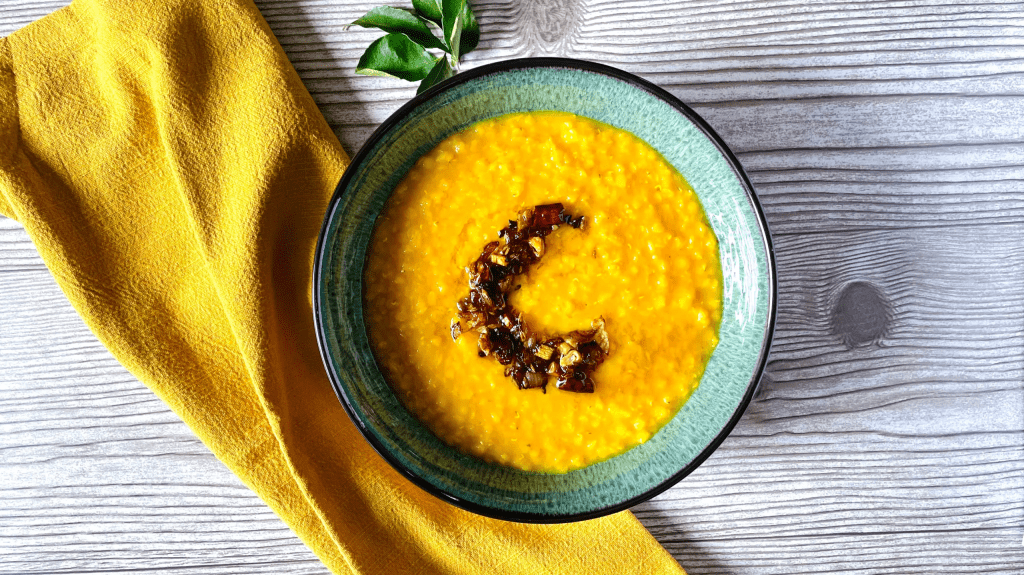
40 Kata Kat
Kata Kat, also known as Taka Tak is a special meat dish popular throughout Pakistan. It is a dish originating from Karachi, made from offal including testicles, brain, kidney, heart, liver, lungs and lamb chops in butter. Green chilis, tomatoes and other spices are mixed as it is prepared on a flatter version of a Karahi as a griddle and two flat short handled Karahi spatulas. Served with sprinkled lemon juice, coriander and yoghurt raita, it is enjoyed with hot naan.

41 Karahi
The origin of one of the most popular dishes in Pakistan, the karahi, is shrouded in mystery. Some say it is an invention of a particularly clever Mughal chef who was rather short of time. Others, however, are convinced that this was the food whipped up by truck drivers on long routes who were searching for a taste of home away from home. Whichever group of believers you may fall to, the fact remains that karahi is a dish that will liven up your dining table even as a standalone dish. Be it mutton, lamb, beef or chicken, karahi is best when cooked slowly in a shallow wok. The meat is stewed with tomatoes, lemon and yogurt and a variety of condiments. Garnished with sliced ginger, green chillies and cilantro to be devoured with flat bread such as chapati or naan, karahi is the ultimate comfort food.
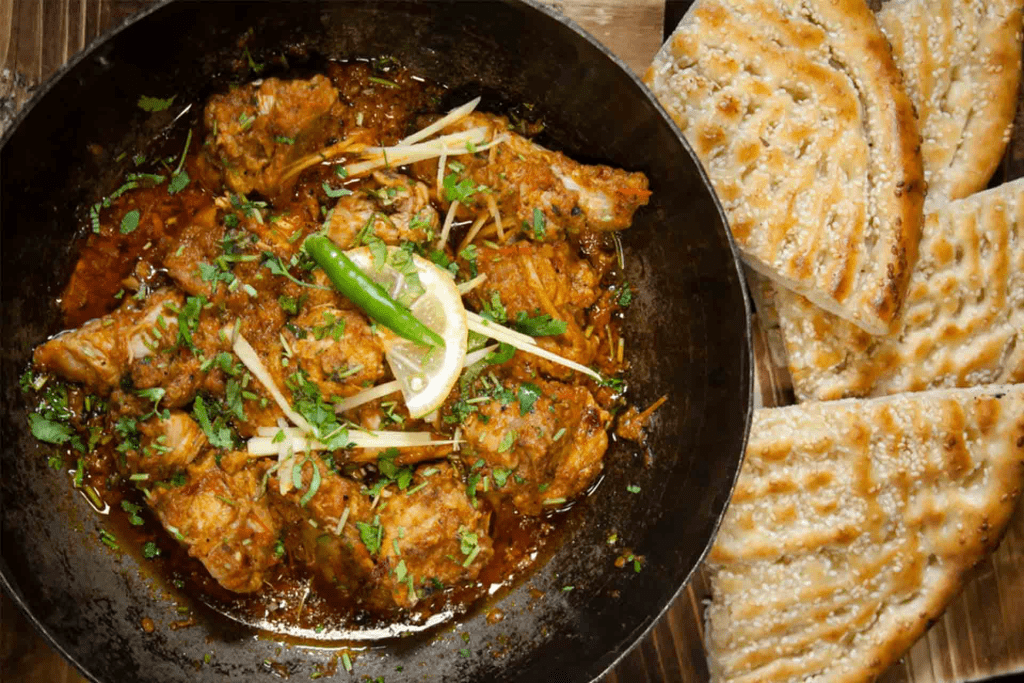
42 Qatlama
A pizza-like savory dish coming from Pakistan, qatlama is a large round flatbread that is smeared with a vibrant red-colored mixture of gram flour, spices, and herbs before getting deep-fried. The dough, usually made with plain flour, water, salt, and oil is then streched into a huge flat disk before being covered with the spicy mixture and entirely submerged into hot oil to fry until nice and crispy. Typical ingredients used for the topping include gram flour, garam masala, mash dal, chili powder, coriander seeds, cumin seeds, dried pomegranate seeds, and artificial food coloring in order to create a more vibrant dish. This spicy and savory flatbread is a typical street food item and a common breakfast meal, but it is also found in Pakistani restaurants worldwide.

43 Rabri
Rabri is a sweet, condensed-milk-based dish, made by boiling milk on low heat for a long time until it becomes dense and changes its colour to off-white or pale yellow. Jaggery, spices, and nuts are added to it to give it a flavor. It is chilled and served as dessert. Rabri is also mixed with mango to serve as Mango-rabri. It is also consumed with puri during winters.

44 Siri-Paiye
Simple in its outlook Siri Paiye is a delicacy enjoyed throughout Pakistan, particularly during winters. It is often eaten early in the day as its heaviness lasts for hours. Siri Paaye is a dish made from goat’s trotter. The trotter is dipped in the curry of the bones for up to 17 hours and thus a special taste is achieved which when served with naan will give your taste buds something worth remembering.

45 Gajar Halwa
This specialty is a winter gift in Pakistan. It is prepared by shredding carrots and boiling in milk till softened. Sugar is added to sweeten it. Cardamon, pistachio, almonds and khoya (dried milk) are added to make it flavourful. Gajar Halwa is a delicacy served at special occasions such as weddings during winter season. It is readily available at all mithai shops in Pakistan.

46 Boat Basin
Boat Basin Food Street in Clifton, Karachi is a popular place to go for a delicious breakfast of halva puri, chaana paratha or the many parathas that the place has to offer. The traditional tact-style setting with pillows makes it more welcoming, as visitors are treated to hot cups of tea or coffee. To satisfy different taste buds, French fries, burgers and pizza are on offer too. At night, the streets are buzzing with activity as the aroma of nihari, kebabs and barbecue lingers in the air in combination with naan and pulao. A great stop to enjoy a meal.

47 Port Grand
Twinkling lights reflected in the sea, cool breeze and lots of entertainment – that’s what Port Grand offers visitors to Karachi. Located next to the Beach Luxury Hotel overlooking the 19th century Jetty Bridge, Porto Grande is a combination of food, drinks and entertainment. The coastal corridor with open seating provides an excellent atmosphere. It is the center of shopping, restaurants, cultural and coastal recreational activities in the city. The kilometer-long bridge has been transformed into an entertainment and food enclave, which houses numerous restaurants offering exotic Pakistani and international cuisine. Visitors can also enjoy boating along China Creek.
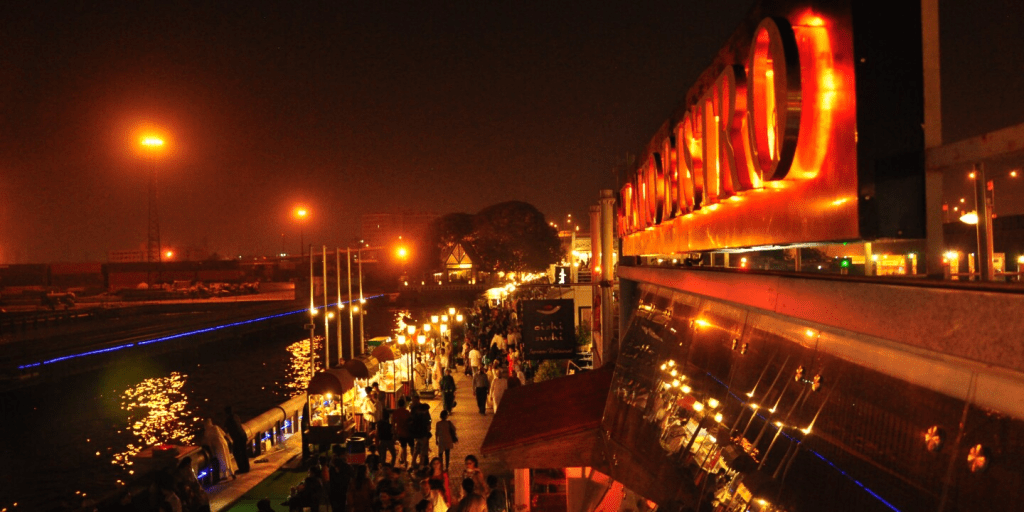
48 Food Street Lahore
With music playing in the street and a glorious view of the Badshahi Mosque and Lahore Fort, it is the perfect way to spend your evening at the food street in Lahore. A lineup of colourful buildings, streets lined with lamps, and the rooftops provide the most glamorous view of Lahore’s stunning skyline which is even more beautiful at night when the place is lit with lights. The streets is full of food carts with some of the best street food items including Kulfi, Kashmiri chai, Jalebi, Gulab Jaman, and much more which are a must-have when visiting Lahore. Food Street Lahore represents the local culture and diversity of taste and food of the area. The captivating environment along with the delicious food is bound to make your visit a memorable and unforgettable one.

Lahore Fort Food Street gives an iconic view at night
49 Cunningham Clock Tower
Also known as Ganta Ghar, it is located at the beginning of Heritage Trail and Food Street in Peshawar. The famous Peshawari charsi karahi and pulao are finger-licking food of the Peshawar street. In the early morning, you can start your day with a cup of hot tea and a spicy meal.

50 Scuba Diving and Snorkeling
Churna Island for many is nothing less than a hidden paradise located in the Arabian Sea. Churna Island is best known and popular for Snorkeling and Scuba diving trips. Since the sea is calm with the absence of high tides the best time to snorkel is in the months of September till April. Snorkeling and scuba diving is an adventure that starts from Karachi. A fun day includes underwater photography, exploring the clear blue waters of the Arabian Sea and enjoying a feast of biryani and chicken. The experts take the group to hidden caves, which is a rare treat for visitors.
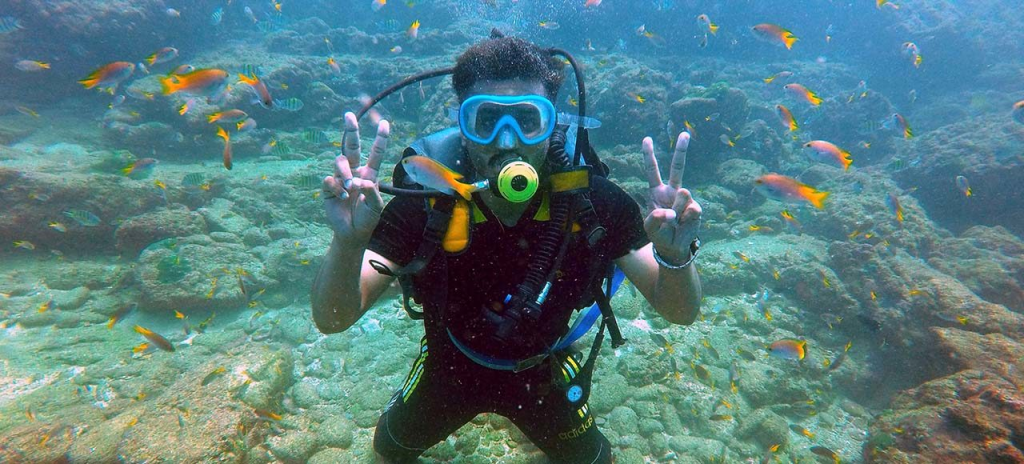
51 Cholistan Desert Jeep Rally
Cholistan Jeep Rally is an off-road rally that takes place annually in Cholistan Desert. It started in 2005. The rally starts near the Derawar Fort. The rally attracts thousands of visitors from all over Pakistan. The purpose to hold this event in the heart of Cholistan desert is to showcase the rich culture of this place. It usually happens in February every year.
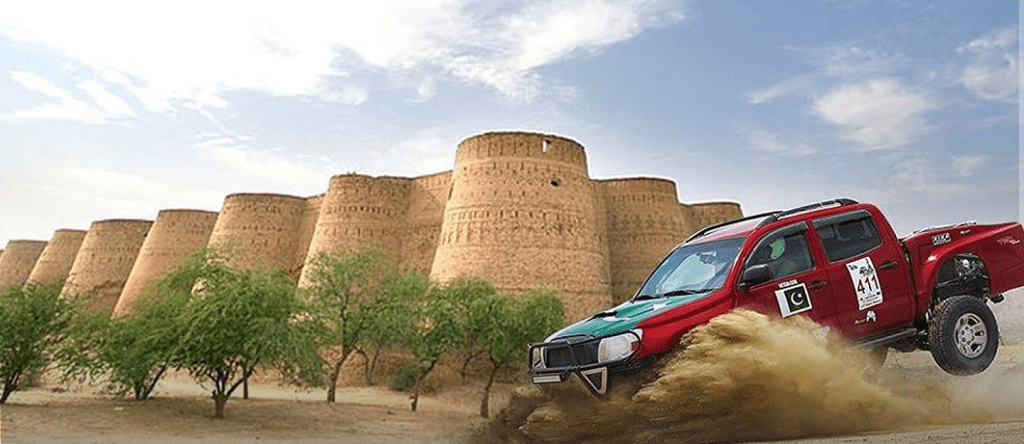
52 River Rafting
The high-rise mountain peaks on the northern side border of the country and the snow topped mountains with huge glaciers make several rippling rivers that ruffle down from the Himalayas and the Karakorum to fields of Pakistan before meeting at the Arabian Sea. These streams in the north of Pakistan offer an open door for white waters sports. The Indus River expedition is one of the best rivers for kayaking or rafting in Pakistan. Indus, Gilgit, Skardu and Hunza are some of the rivers in Pakistan that make great white water-sports spots. The Indus, Ravi and Chenab in northern Pakistan also give great chances to water sports. River rafting, canoeing and kayaking can also be enjoyed at these rivers, These rivers create rapids ranging from class 1 to class 5, making the sports apt for people with all levels of skill.

53 Skiing
Skiing is yet another adventure sport that can be enjoyed in the northern mountains of Pakistan. Gilgit Baltistan region offers numerous skiing spots including Naltar, Burzil, Ratu and Astore. One of the best destinations considered for skiing is Malam Jabba, 300 kilometres from Islamabad that offers excelling skiing opportunities. Malam Jabba is a hill station in the Karakoram mountain range nearly 40 km from Saidu Sharif in Swat Valley. Besides skiing, tourists abound here to see monasteries that are scattered around the resort. The other well-known skiing destination is Nathiagali located at an elevation of some 8000 feet in the Himalayas. Pakistan offers many wonderful skiing resorts.

54 Mountaineering
There are many areas in the north of Pakistan to choose from when you want to go for mountaineering. Karakorum ranges in the Himalayas provide an excellent place to do mountaineering. Four summits above 8000 meters, K2, Gasherbrum I and II as well as Broad Peak exist in Karakoram in an area of only 20 kms encircling the reputed glacial junction – Concordia. Baltoro, Soltoro, Lupghar, Khunjerab, Panmah, Aghil, Masherbrum, Saser, Hispar, Siachin, Rino, Batura, Rakaposhi/Bagrot and Haramosh are the sub-regions of the Karakoram.
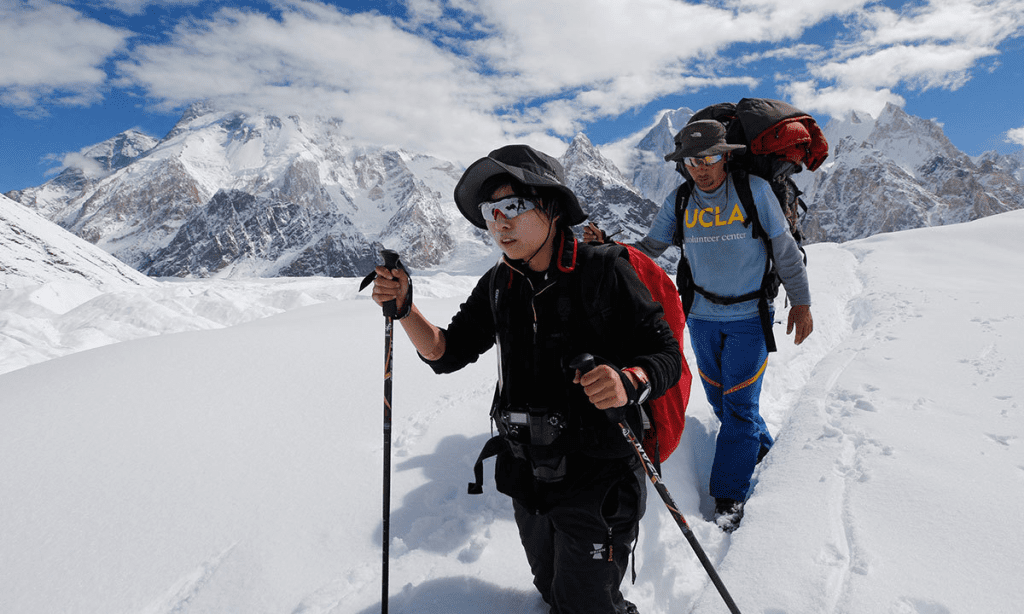
55 Trekking
Pakistan has some of the greatest treks in the world, the famous K2 base camp Gondogoro Pass crossing is on the bucket-list of many hiking enthusiasts and offers amazing 360 degree panoramic views of the highest mountains in Pakistan. Other options include Shimshal valley or the Wakhan corridor trek. This provides a beautiful view along Biafo to the Hispar glacier and the magnificent views at the round Nanga Parbat. Trained mountain guides help beginners. Gilgit-Baltistan is one of the main regions for trekking but also Chitral, Swat and the Kaghan valley in the Khyber-Pakhtunkhwa offer a lot of interesting routes.
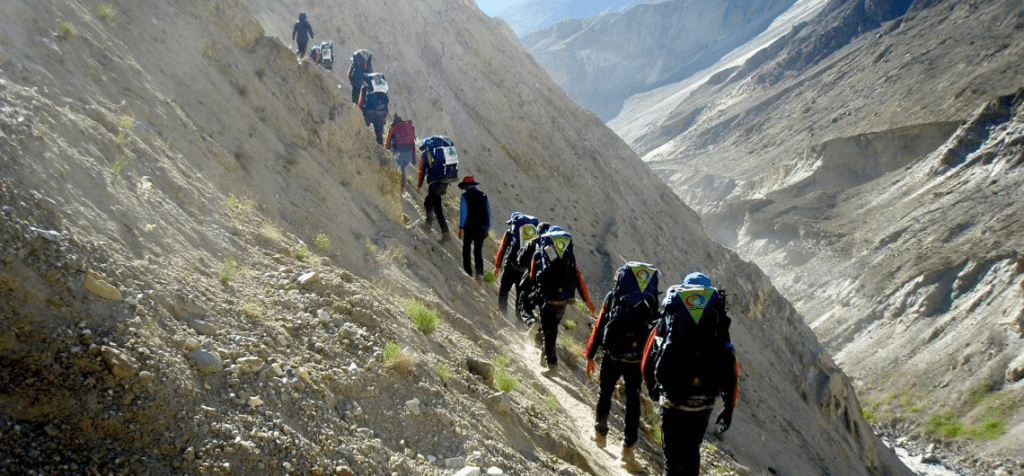
56 Stargazing at Gorakh Hill
Gorakh hill station is a beautiful hill station with an elevation of over 5000 ft, located 94 km southwest of Dadu, Sindh, Gorakh hill station lies in Kirthar mountain range, known as the Muree of Sindh. This is a place where you can taste the real winter of Sindh with an average temperature range of 16-32, and in winter from -5 to +5. At night, the high altitude gives a great opportunity to watch the stars. With all the necessary amenities, this is a great opportunity for adventure lovers.

57 Anarkali Bazaar
Anarkali is the most ancient bazaar of Pakistan located in Lahore, having its own colours and district features. The bazaar is famous for traditional and modern commodities including clothes, traditional jewelry, handicrafts, bangles, shoes, shawls and other accessories. This bazaar has a whole concept and story behind it, named after a slave girl Anarkali during the reign of Mughal Emperor Abar. Within the New Anarkali Bazar are markets known as Bano Bazar, Dhani Ram Road, Jan Muhammad Road, Aabkari Road, Paisa Akhbar, Urdu Bazar and Paan Gali. New Anarkali Bazar is also famous for halwa puri, nihari and siri paye.

58 Zainab Market
Test your haggling skills at Zainab Market Karachi by choosing between the best brands at affordable prices. You can find almost anything at the market, including bags, clothing, footwear, shawls, jewelry, handicrafts, and plenty of other goods. Shops sell both popular and local brands, as the crowded market hums with the sound of people haggling to get a better price. Walk along the market’s streets to get a taste of the local culture. Located in the heart of Saddar, plenty of sights can be explored and enjoyed within walking distance. While shopping, cold drinks including the famous lemonade are readily available coupled with hot bun kababs.

59 Malls of Pakistan
A trip to Pakistan remains incomplete without a visit to the malls here. The country offers many international standard shopping malls with the best food, retail and entertainment brands all available under one roof. Some of the malls worth exploring include Dolmen Mall, Karachi, Centaurus Mall, Islamabad, Giga Mall, Packages Mall, Lahore and Kohinoor One, Faisalabad. These malls are huge, multi-storied structures that provide everything under one roof in a secure and quality standart ambiance. Great food, deals, brands and much more is on offer.



60 Snow Leopards
It is estimated that 200-420 snow leopards exist in Pakistan’s northern mountaines across Khyber Pakhtunkhwa, Gilgit-Baltistan and Azad Jammu and Kashmir. While small, Pakistan’s snow leopard population represents the world’s third largest by size, highlighting the country’s importance for conserving the species worldwide. The largest snow leopard population is largely concentrated in the Khunjerab National Park and Central Karakoram National Park. The total snow leopard habitat available in Pakistan is about 80000 km2 and encompasses four high mountainous system, namely the Hindu Kush, the Pamirs, the Karakoram, and the Himalayas. These majestic ranges are home to some of the world’s most fascinating and endangered wild species, including the Marco Polo sheep, musk deer, brown bear and the Himalayan ibex.

61 Yak
In Pakistan, yaks are found in the Himalayan and Karakoram mountain ranges. Their large herds are found in the Shimshal valley in the Khunjrab National Park, an area northeast of Gilgit bordering China. Besides these are found in Passu, Nagir and Baltistan. Yaks are also found in the Broghil Valley, Chitral. Shimshal is ideal breeding ground of the yaks as it is located at an altitude of 3, 108 metres. The yak is an excellent pack animal and vehicle in snow-covered areas, as it is able to live in these hostile negative conditions. In Pakistan, Yak Safari is also available in the northern region.
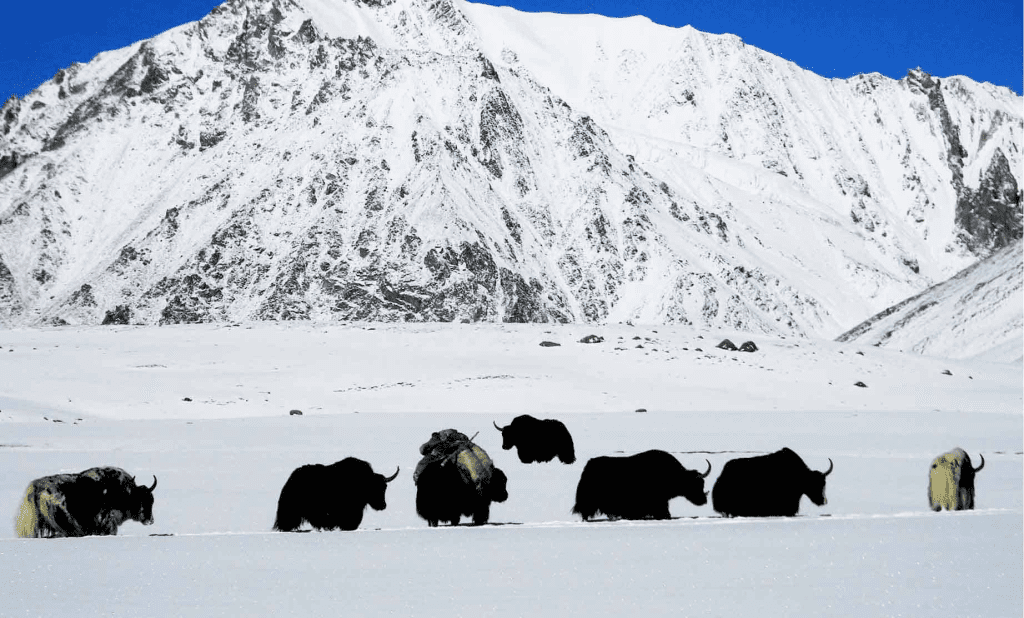
62 Markhor
Markhor, a magnificent wild goat, is the national animal of Pakistan. Its corkscrew-shaped horns and powerful hooves are just a couple of its imposing features. There are five-species of Markhors. Markhors are normally 26 to 45 inches in height, have light brown and black coats, and weigh 32 to 110 kilograms. Male ones generally have a longer beard, while female markhors tend to be redder in colour. Pakistani government has placed a ban on hunting of Markhors to save them from extinction.

63 Katas Raj Temple
The Katas Raj Temples also known as Qila Katas is a complex of several Hindu temples connected to one another by walkways. The temple complex surrounds a pond named Katas which is regarded as sacred by Hindus. The complex is located in the Potohar Plateau region of Pakistan’s Punjab province. The temples are located near the town of Choa Saidanshah, and are near the M2 Motorway. The temples’ pond is said in the Puranas to have been created from the teardrops of Shiva, after he wandered the Earth inconsolable after the death of his wife Sati.

64 The Kartarpur Corridor
The Kartarpur Corridor is a visa-free border crossing and religious corridor, connecting the Gurdwara Darbar Sahib in Pakistan to Gurdwara Dera Baba Nanak in India. The crossing allows devotees from India to visit the Gurdwara in Kartarpur through this 4.7 kilometres corridor. The corridor was completed for the 550th birth anniversary of Guru Nanak in 2019. Pakistan believes that the road to prosperity of region and bright future of our coming generation lies in peace. Gurdwara Darbar Sahib is actually located on the River Ravi. It is built on the historic site where the founder of Sikhism, Guru Nanak settled and lived for 18 years until his death in 1539.
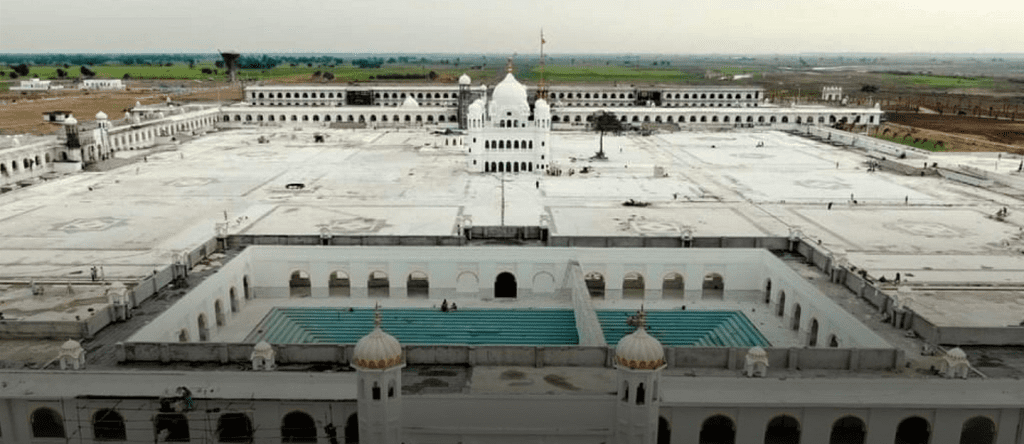
65 The Nagarparkar Jain Temples
The Nagarparkar Jain Temples are located in the region around Nagarparkar in the southern Sindh. The site consists of a collection of abandoned Jain temples, as well as a mosque heavily influenced by the architectural style of the temples. Buildings in the region date from the 12th to the 15th centuries – a period when Jain architectural expression was at its zenith. Nagarparkar was a centre of Jainism for several centuries and the wealthy local Jain community built several extravagant temples in the nearby hills. Nagarparkar has been the center of Jainism for several centuries, and the wealthy local Jain community has built several extravagant temples on the nearby hills. This region became a place of pilgrimage known as Sardhara, where Jain ascetics settled in the Karunjar mountains. In 1650, the Nagarparkar region was described as “the most glorious of all regions”.
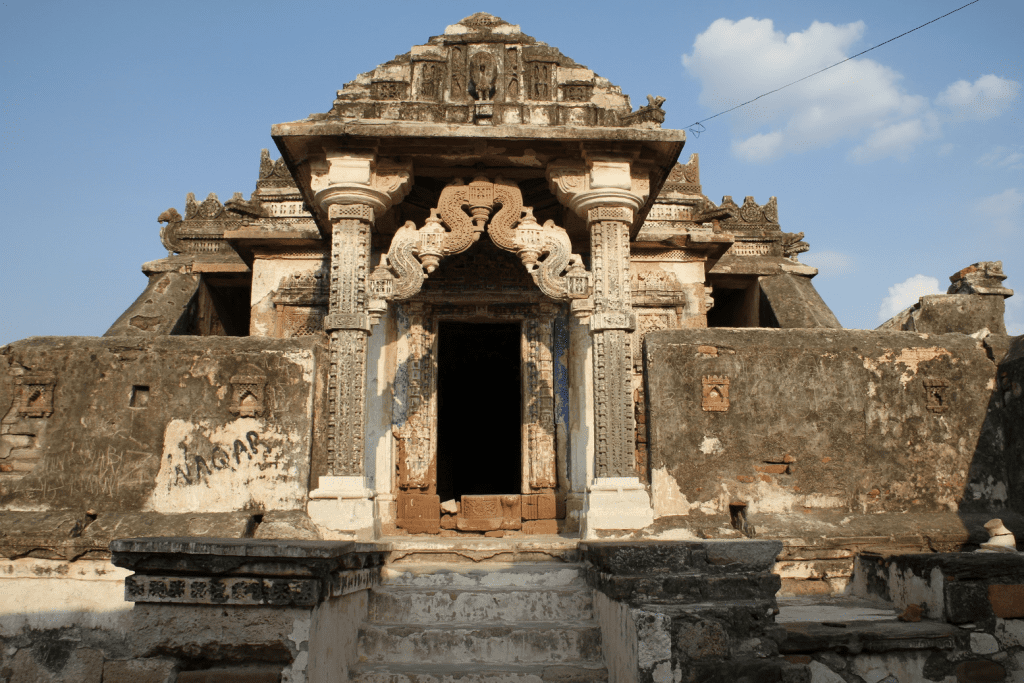
66 Lok Virsa Museum
Heritage Museum also known as Lok Virsa Museum is a museum administered and managed by Lok Virsa – National Institute of Folk and Traditional Heritage. It is a museum of history and culture in Islamabad located on the Shakarparian Hills. It showcases the living cultures of Pakistan. The museum opened in 1974 and became an autonomous institute in 2002. The living style of the different areas of Pakistan is exhibited here in statues, pictures, pottery and textile work. Lok Virsa is the finest cultural museum as it showcases art works that help in preserving the living folk and traditional culture and crafts of Pakistan.


67 Lahore Museum
The Lahore Museum is located in Lahore, founded in 1865 at a smaller location and opened in 1894 at its current location on the Mall Road. Lahore Museum is one of Pakistan’s most visited museums and one of the major museums in South Asia. The museum houses an extensive collection of Buddhist art from the ancient Indo-Greek and Gandhara kingdoms. It also has collections from the Mughal Empire, Sikh Empire and the British Empire. The Fasting Buddha, dating from the Gandhara period, is one of the museums most prized and celebrated objects. The ceiling of the entrance hall features a large mural by Pakistani artist Sadequain. The museum also presents fine examples of wood carvings and musical instruments of the Mughals and Sikhs, antique jewelry, textiles, ceramics and weapons.
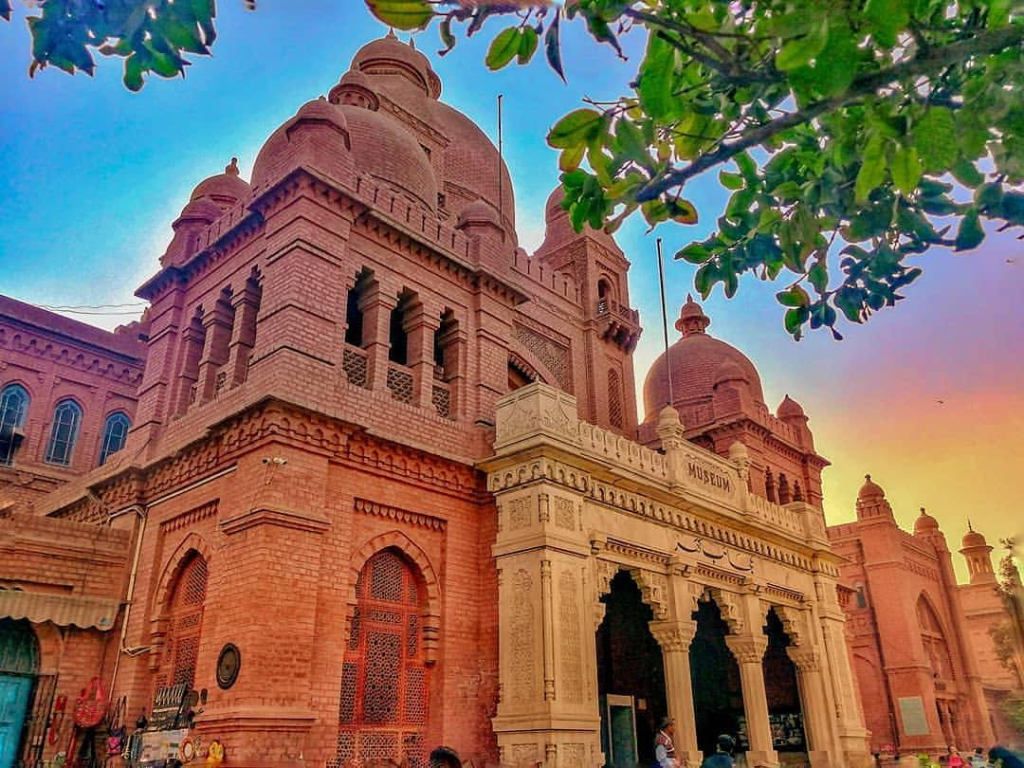
68 Golra Sharif Railway Museum
Golra Sharif Railway Museum, also known as Pakistan Railways Heritage Museum, also known as Pakistan Railways Heritage Museum, is a railway museum located at a junction station in Islamabad. Located at 1,994 feet above sea level, in the southeast of the Margalla Hills and east of the cradle of Gandhara civilization, the ancient city of Taxila. At this railway station there is a revered railway museum, which houses relics and memorabilia related to the railways of the British RAJ. The railway station with its museum is the main attraction for tourists and locals and is becoming the main attraction for railway lovers.

69 Taxila Museum
The Taxila Museum holds one of the most significant and comprehensive collection of stone and stucco sculptures from the Buddhist Art of the Gandhara Civilization. The museum is located in the midst of numerous archaeological sites scattered throughout the Taxila region and boasts a rich collection of Gandaran artifacts. The main collection of the museum was discovered during the excavations of Taxila, such as the settlement of Kurgan Bhir, Sirkap and Sirsukh.

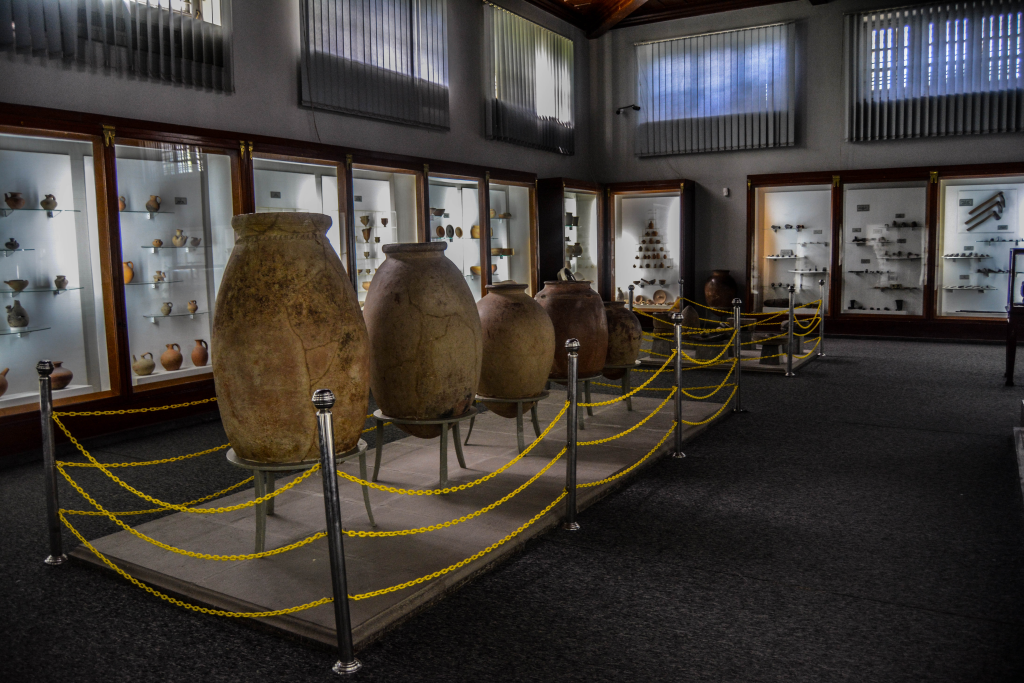
70 State Bank of Pakistan Museum
State Bank of Pakistan Museum and Art Gallery is a museum on Chundrigar Road, Karachi, established in 2004 to introduce the first Monetary Museum of Pakistan. The Museum building is a Greco Roman building in Jodhpuri Red Sanstone constructed in the 1920s by the British government, The Coins Gallery displays the techniques with some original dies of coin making, also includes some old machines. The Pre Islamic Gallery exhibition shows the barter system, seals used by Indus people. The Currency Gallery gives an overview of the origin of paper currency in the sub-continent, from early paper issues to polymer banknotes. The gallery of the museum displaying the history of Currency Notes in Pakistan and also includes the collection of historical, current and polymer banknotes of different countries around the world.The museum’s gallery displays the history of banknotes in Pakistan, and also includes a collection of historical, modern and polymer banknotes from around the world.

71 Archaeological Museum of Balochistan
This small but well-kept Archaeological Museum of Balochistan, also known as Quetta Museum, is hidden East of Mizan Chowk. The galleries display figurines from Moenjodaro in Sindh province, pottery pieces from sites in Balochistan, and Stone Age implements from the Zhob, Quetta and Kalat Valleys.



72 Jinnah Park Rawalpindi
Jinnah Park Rawalpindi is a modern public park right in the heart of Rawalpindi, Punjab, Pakistan. The park is one of the largest parks in the city having a number of different facilities, local and international food outlets and much more. Most appreciated public facilities include: wide spread and well-designed lush green lawns, rose gardens, seasonal flowers, fruit trees, Cinepax cinema and birds aviary, Kids Play area, different swings, unity towers, different monuments and much more. Along with its natural beauty the Park is also famous for quality food outlets. Few sports facilities like jogging track, futsal academy, skating arena, gym, bowling arena, cricket pitches and Basketball courts are also there to grab interest of sports loving population and youth.
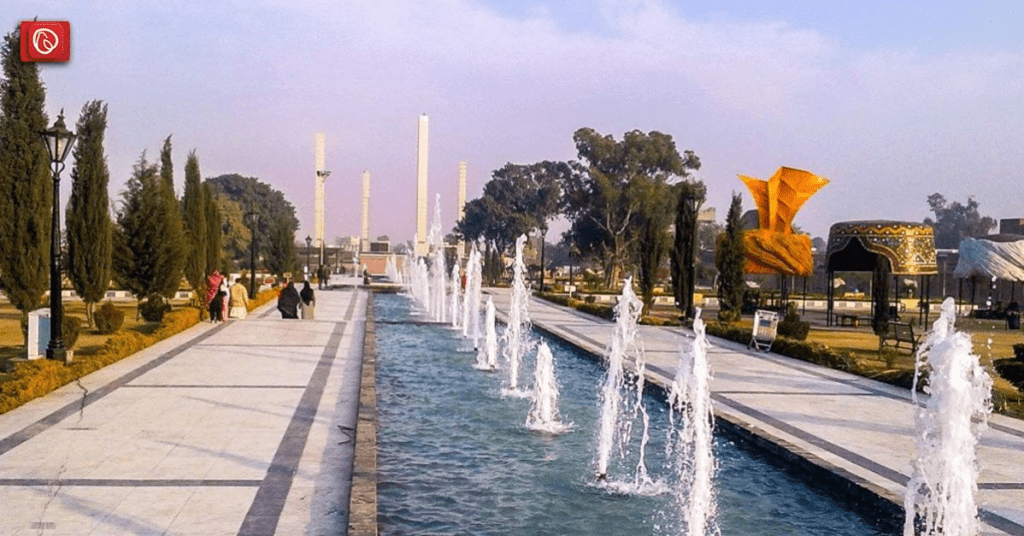
73 Wah Gardens
Also known as Mughal Garden Wah, the garden dates back to the era of the Mughal Emperor Akbar, located at Wah, Hasan Abdal. The reconstruction of the four walls of the garden, the big pond, the canals, and the paths are near completion. The work of replanting the trees that were there in Mughal days, repairs of the twelve-door structures, the waterfalls are also being renovated. The garden is a beautiful reminder of the Mughal period.

74 Shalimar Gardens
The Shalimar Gardens are a Mughal Garden complex in Lahore. The gardens date from the period when the Mughal Empire was at its artistic and aesthetic zenith and are now one of Pakistan’s most popular tourist destination. The Shalimar Gardens were laid out as a Persian Palace intended to create a representation of an earthly utopia in which humans co-exist in perfect harmony with all elements of nature. Construction of the gardens began in 1641 during the reign of Emperor Shah Jahan and was completed in 1642. In 1981 the Shalimar Gardens were inscribed as a UNESCO World Heritage Site as they embody Mughal garden design at the apogee of its development.

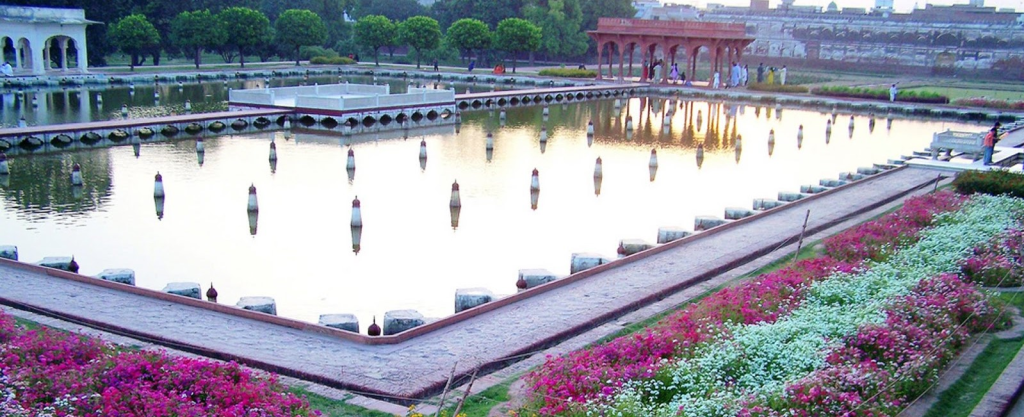
75 Lal Suhanra
Lal Suhanra is a national park situated in the Bahawalpur district, Punjab. It is one of South Asia’s largest national parks, and is a UNESCO declared Biosphere Reserve. Lal Sohanra is notable for the diversity of its landscape, which includes desert, forest and wetland ecosystems. There are archaeological remains of the ancient Indus Valley Civilization which flourished along the Ghaggar Hakra River. The main purpose of this area was to protect the wildlife of Cholistan Desert.





SOURCE: FASCINATING PAKISTAN


